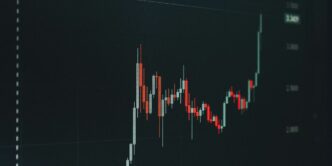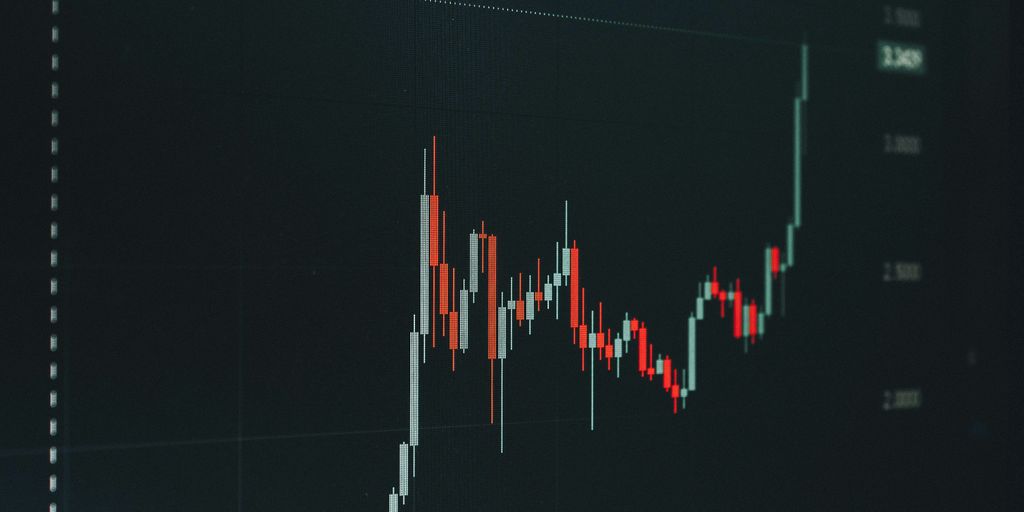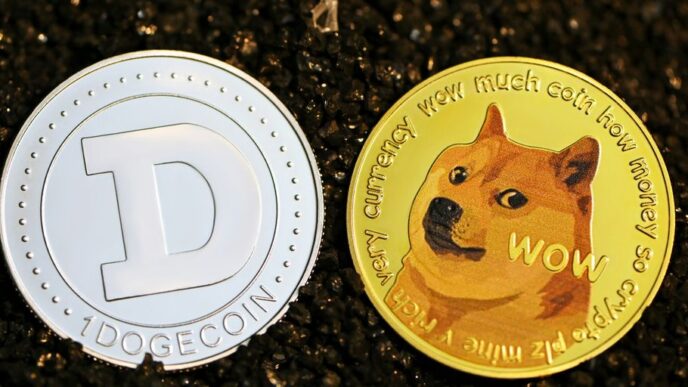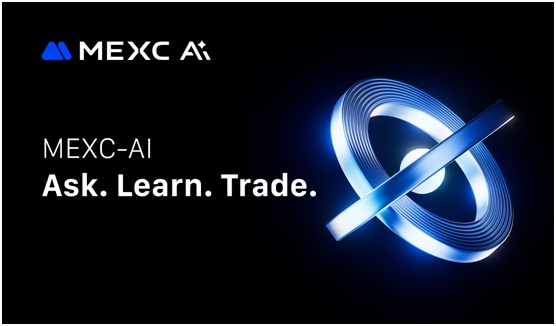So, D-Wave’s stock has been a bit of a rollercoaster lately, and people are wondering why. It seems like a mix of things is going on, from how the company is doing financially to what’s happening with quantum computing in general. Let’s try to break down why D-Wave stock is dropping and what might be coming up.
Key Takeaways
- D-Wave’s stock has seen a recent drop, with some analysts pointing to concerns about its technology and competition in the quantum computing field.
- Financial performance, including missed earnings expectations and share offerings, has added to investor unease.
- Despite financial challenges, the company’s Advantage2 machine and quantum supremacy demonstrations show technological progress and market potential.
- Analyst ratings have shown some positive movement, with upgraded price targets suggesting optimism about future revenue and partnerships.
- D-Wave’s financial health shows strong liquidity, but profitability and asset use remain areas for improvement as the quantum computing market evolves.
Understanding the Recent Stock Decline
Analyzing the Immediate Price Drop
Lately, D-Wave Quantum’s stock has seen a noticeable dip, with shares trading down significantly. For instance, on a recent Wednesday, the stock dropped by 6.04%. This kind of movement can be unsettling for investors, especially when it follows a period of ups and downs, like a previous session surge of 10.2% followed by a premarket decline of 3.4%. This volatility suggests a market that’s unsure about the company’s immediate future. It’s like trying to predict the weather; one minute it’s sunny, the next there’s a storm brewing. The stock price recently hit $9.96, a drop of 10.9% from its previous high, which certainly caught many people’s attention.
Investor Sentiment Amidst Volatility
When stock prices swing like this, investor sentiment can get pretty shaky. Think of it like this: if you’re planning a picnic and see dark clouds rolling in, you might start to worry, even if the rain isn’t there yet. That’s kind of how some investors are feeling. They’re watching these price drops and the general uncertainty and wondering what’s next. Some might decide to sell their shares quickly to avoid further losses, while others might see this as a chance to buy in at a lower price, hoping for a rebound. It really depends on how much risk each person is comfortable with. The market is a bit like fishing in rough waters; you’re waiting for things to calm down, but you never know when the next big wave might hit.
Key Factors Influencing Market Reaction
Several things seem to be pushing D-Wave Quantum’s stock around lately. One big factor is the company’s recent financial reports. They announced a loss of $-0.08 per share for their fourth quarter, which was a bit worse than what analysts were expecting. When companies don’t meet earnings expectations, it often makes investors nervous about their ability to make money. On top of that, D-Wave Quantum is planning to sell more shares, about 5 million of them. Selling more shares can sometimes lower the value of existing shares because there are now more shares available. This move might be to raise money for the company, but it can also make people wonder if the company needs the cash or if it’s planning a big expansion. These events combined create a lot of uncertainty, and the market doesn’t like uncertainty very much.
Financial Performance and Investor Concerns
Let’s talk about D-Wave’s money situation, because, honestly, it’s been a bit of a bumpy ride for investors lately. When a company misses its earnings targets, people get nervous, and D-Wave has had a few of those misses. It makes you wonder if they’re really on track.
Decoding Quarterly Earnings Misses
Missing earnings isn’t just a headline; it’s a signal. It means the company didn’t make as much money as analysts expected. For D-Wave, this has happened a few times, and it’s definitely put a damper on investor confidence. People start questioning the company’s ability to predict its own performance, and that uncertainty can lead to stock price drops. It’s like planning a party and then realizing you’re short on snacks – not a disaster, but definitely not ideal.
Impact of Share Offerings on Stock Value
Companies sometimes sell more shares to raise cash. While this can be good for operations, it can also dilute the value of the shares that existing investors already own. Imagine you have a pizza, and suddenly more slices are made from the same pizza – your slice becomes a smaller piece of the whole. D-Wave has done this, and it’s a move that often makes investors pause and consider if their stake is becoming less valuable. It’s a common move, but it doesn’t always make shareholders happy.
Assessing Profitability and Operational Efficiency
Looking at the numbers, D-Wave has a pretty good gross margin, which means they’re managing the cost of making their products well. That’s a positive sign. However, when you look at other profit measures, like pre-tax profit or EBIT margins, they’re in the red. This suggests that while the core product might be cost-effective to produce, the overall business operations aren’t yet turning a profit. It’s like having a great recipe for cookies but struggling to sell enough to cover the cost of the bakery itself. The company’s asset turnover ratio is also quite low, meaning it’s not generating a lot of sales from the assets it owns. This points to potential inefficiencies in how the business is run, which is something investors are watching closely.
Technological Advancements and Market Position
It’s easy to get caught up in the stock price swings, but let’s talk about what D-Wave is actually doing with its technology. The company has been making some serious noise in the quantum computing world, and that’s a big part of why people are paying attention. They’ve been showing off their Advantage2 machine, and some of the results have been pretty impressive. Think about it – they’re claiming their quantum computer can outperform even the best traditional supercomputers on certain tasks. That’s a pretty big deal, and it’s not just talk; they’ve got demonstrations to back it up.
Quantum Supremacy Demonstrations
So, what does “quantum supremacy” even mean? Basically, it’s when a quantum computer can solve a problem that even the most powerful regular computers can’t realistically handle. D-Wave has been working on proving this with their systems. These demonstrations aren’t just for the science crowd; they’re showing that quantum computers, like D-Wave’s, are moving beyond theory and into practical problem-solving. This kind of progress is what gets investors excited because it suggests real-world applications are getting closer.
The Role of the Advantage2 Machine
The Advantage2 machine is D-Wave’s latest piece of hardware, and it’s central to their current push. It’s designed to tackle complex problems, especially in areas like optimization. Imagine trying to figure out the most efficient delivery routes for a massive fleet of trucks or how to best manage a complex financial portfolio. These are the kinds of problems quantum computers are expected to excel at. The Advantage2 is D-Wave’s bet on being a leader in solving these kinds of challenges. They’re also looking at how to fit this technology into existing supercomputing setups, which could be a game-changer for large organizations.
Competitive Landscape in Quantum Computing
Now, D-Wave isn’t the only player in this game. The quantum computing field is getting crowded, with big tech companies and other startups all vying for a piece of the pie. Everyone is trying to build better quantum computers and find practical uses for them. D-Wave’s advantage, so far, seems to be their focus on specific types of problems and their longer track record in the field. However, they need to keep innovating and showing real results to stay ahead. It’s a fast-moving race, and while D-Wave has made strides, staying at the front means constantly pushing the boundaries of what’s possible.
Analyst Ratings and Future Outlook

So, what are the folks who watch D-Wave closely saying about its future? It’s a mixed bag, really. Some analysts are pointing to the company’s tech as a real game-changer, while others are still a bit hesitant because of the financial ups and downs. It’s like looking at a weather forecast – you see sunshine, but there’s a chance of rain too.
Upgraded Price Targets and Buy Ratings
Despite some of the recent stock price dips, a few analysts have actually boosted their price targets for D-Wave. For instance, Benchmark recently bumped its target up to $14. This suggests they see potential in the company’s quantum computing advancements. It’s a sign that some in the financial world believe the technology itself is strong, even if the company’s financials are still finding their footing. It’s not a universal endorsement, mind you, but it’s definitely a positive signal for those who believe in D-Wave’s long-term vision.
Revenue Growth Projections
When we look at how much money D-Wave is expected to make, the projections are pretty interesting. While the company has faced challenges, there are expectations for growth, especially as quantum computing moves into more commercial uses. Think about it: as more businesses start to see the value in quantum solutions, D-Wave could be in a good spot to capture that market. The company’s gross margin, which is actually pretty healthy at 83.2%, shows that when they do make sales, they’re keeping a good chunk of it. That’s a good sign for future profitability if they can ramp up sales volume.
Strategic Partnerships and Market Opportunities
Partnerships are a big deal in the tech world, and D-Wave is no exception. Building relationships with other companies can open up new markets and applications for their quantum technology. Imagine D-Wave’s machines being used in fields like drug discovery or complex financial modeling – these are huge opportunities. The company’s ability to demonstrate things like quantum supremacy with its Advantage2 machine is a big draw for potential partners. It shows they’re not just talking about the future; they’re building it. The market is definitely looking for these kinds of breakthroughs, and D-Wave seems to be positioning itself to be a key player.
Navigating the Quantum Computing Sector

The world of quantum computing is still pretty new, and it’s changing fast. D-Wave is right in the middle of it all, trying to figure out how its technology fits into the bigger picture of supercomputing and what the future holds.
D-Wave’s Role in Supercomputing Integration
Think of supercomputers as the heavy lifters of today’s computing world. They handle massive calculations for things like weather forecasting and scientific research. D-Wave’s quantum technology aims to work alongside these giants, not replace them entirely. The idea is to use quantum computers for specific, really tough problems that even supercomputers struggle with, like complex optimization tasks. This could mean a big shift in how we approach scientific discovery and problem-solving.
- Quantum computers can tackle certain problems much faster than traditional computers.
- D-Wave’s machines are designed to be integrated into existing high-performance computing environments.
- This integration could lead to breakthroughs in fields like drug discovery, materials science, and financial modeling.
Long-Term Market Trends in Computation
The demand for more powerful computing is always growing. As data sets get bigger and problems get more complex, we’ll need new ways to process information. Quantum computing is seen as the next frontier. While it’s still early days, the potential for quantum computers to revolutionize industries is huge. Companies are investing heavily, and the race is on to develop practical applications.
Challenges and Opportunities Ahead
It’s not all smooth sailing, though. Building and maintaining quantum computers is incredibly difficult and expensive. There are also challenges in developing the software and algorithms needed to run them effectively. Plus, the market is still figuring out which companies will lead the way. For D-Wave, the opportunity lies in being an early mover and proving the real-world value of its technology. If they can successfully integrate their systems and show clear benefits, they could secure a strong position in this emerging market. However, they’ll need to keep innovating and demonstrating consistent progress to stay ahead of competitors and convince investors of their long-term potential.
Evaluating D-Wave’s Financial Health
Let’s take a closer look at where D-Wave stands financially. It’s not always easy to make sense of all the numbers, but understanding the company’s financial health is pretty important for anyone watching its stock.
Liquidity Positions and Current Ratios
When we talk about liquidity, we’re basically asking if D-Wave has enough readily available cash to cover its short-term bills. The company’s current ratio and quick ratio are looking pretty solid. Think of these as indicators of how easily the company can pay off its immediate debts. Right now, these numbers suggest D-Wave has a good amount of flexibility. This strong liquidity means they can handle day-to-day operations without immediate cash flow worries.
Debt Management and Capital Structure
How much debt does D-Wave carry, and how does it compare to its overall value? The company’s debt-to-equity ratio is quite low, sitting at 0.05. This tells us that D-Wave relies much more on its own funds (equity) than on borrowed money. Having a low debt load is generally seen as a positive sign of financial stability. It means they aren’t overly burdened by interest payments or the need to repay large loans. This responsible approach to financing can be a good thing for long-term stability. You can see more details about their financial standing on pages like D-Wave Quantum’s financial health.
Revenue Generation and Asset Utilization
Looking at how D-Wave makes money and uses its assets is key. While the company has shown impressive gross margins, meaning they make money on the products they sell before other costs, some overall profitability metrics have been challenging. This can happen, especially in a developing industry. The company reported $15 million in revenue for Q1, which was better than expected. However, returns on assets have been negative, indicating that the company isn’t yet generating significant profit from the assets it owns. It’s a mixed picture: good revenue from sales, but still working on turning those sales into overall profit. The company is also working on improving operational efficiency, which should help with these numbers down the line.
So, What’s the Takeaway for D-Wave?
Looking at D-Wave, it’s clear the company has been through some ups and downs. We saw a rough patch with missed earnings and stock price drops, partly due to worries about their tech and plans to sell more shares. But then, things took a turn. Big news about their Advantage2 computer showing it can beat supercomputers really got people talking, and analysts started raising their price targets. Even with some negative profit numbers, their gross profit is strong, and they seem to have enough cash to keep things running. It’s a bit of a mixed bag right now. Will they keep pushing forward with new tech and find more customers, or will new challenges pop up? It’s hard to say for sure. For now, it looks like a company with big ideas, but investors are still watching closely to see if they can consistently turn those ideas into solid profits. It’s definitely a story to keep an eye on.
Frequently Asked Questions
Why is D-Wave’s stock price going down?
D-Wave’s stock has been dropping because of a few main reasons. Sometimes, companies announce they’re selling more shares, which can make the stock price go down. Also, if a company doesn’t make as much money as people expected in a certain period, that can make investors worried and sell their shares. Lately, there have been some concerns about how well their new technology is doing compared to other companies.
What does it mean that D-Wave missed its earnings?
When a company reports that it lost money instead of making a profit, it’s called an earnings miss. D-Wave recently missed expectations for its earnings, meaning it didn’t perform as well financially as investors had hoped. This can make people nervous about investing in the company.
How does selling more shares affect the stock price?
Selling more shares, also called a share offering, can sometimes lower the price of existing shares. This happens because the total value of the company is now spread out over more shares. Companies often do this to raise money for new projects or to pay off debts, but it can make the stock price dip in the short term.
What is the Advantage2 machine and quantum supremacy?
D-Wave is working on quantum computers, which are very powerful new types of computers. Their ‘Advantage2’ machine is a new model they’ve developed. They’ve also shown that their quantum computer can solve certain problems faster than even the best regular supercomputers, which is a big deal called ‘quantum supremacy’.
What are analysts saying about D-Wave’s future?
Analysts are people who study companies and give advice to investors. Recently, some analysts have actually raised their price targets for D-Wave, meaning they think the stock could be worth more in the future. They seem to be more positive about the company’s future growth and its technology.
Is D-Wave financially healthy?
Even though D-Wave has had some financial ups and downs, their basic financial health seems okay for now. They have enough cash to pay their bills (good liquidity) and don’t have too much debt. They also have a decent profit from their main business operations, even if the overall profit is low. This suggests they can keep operating and try to grow.












